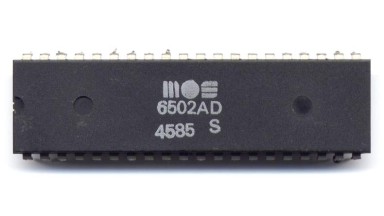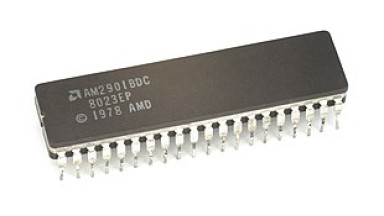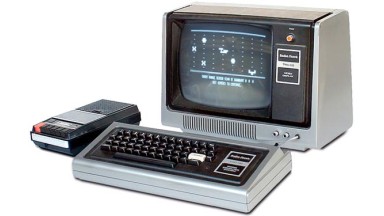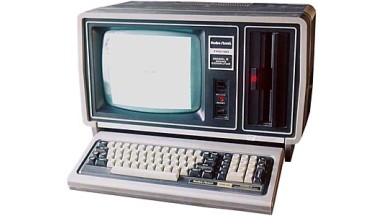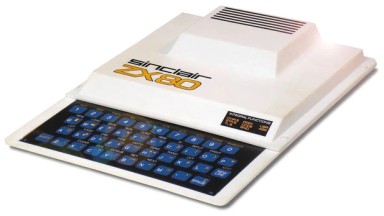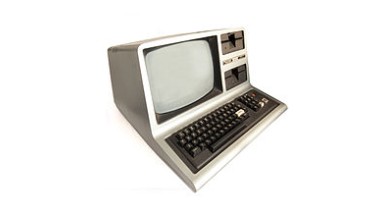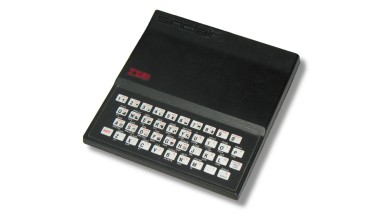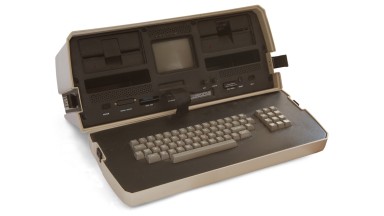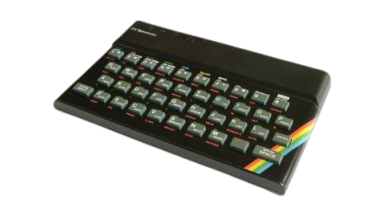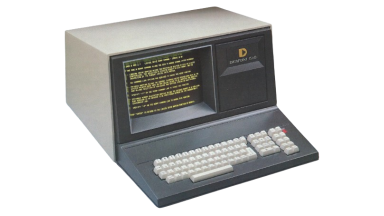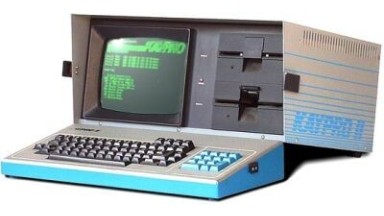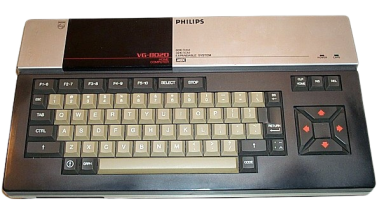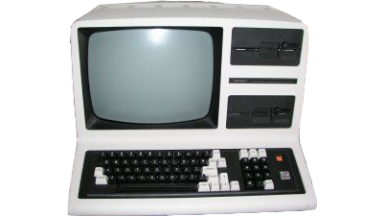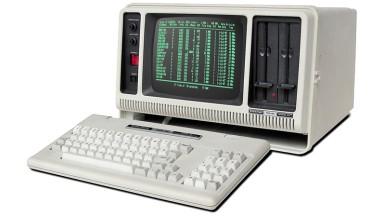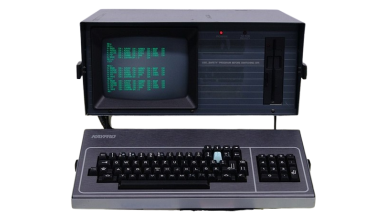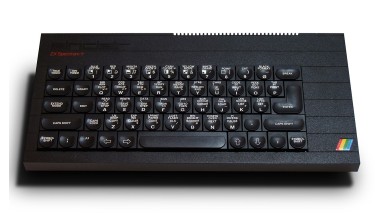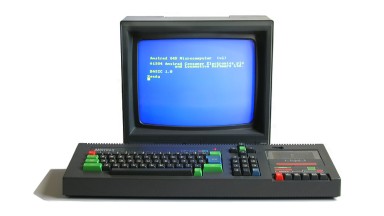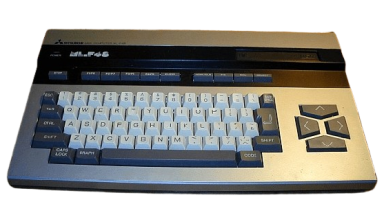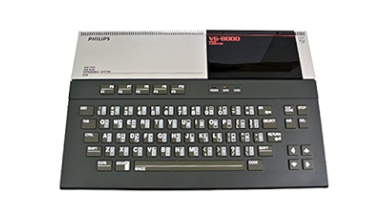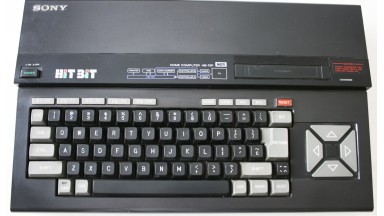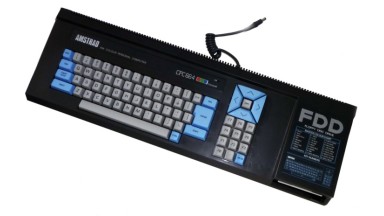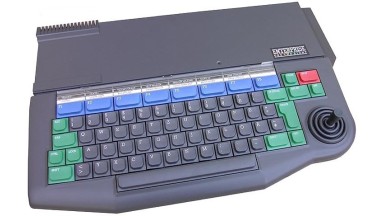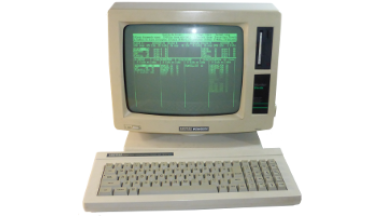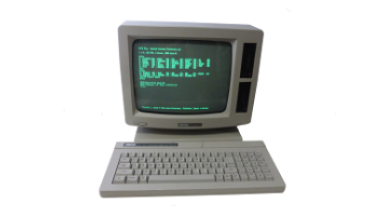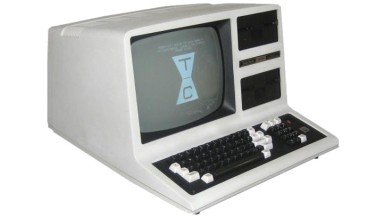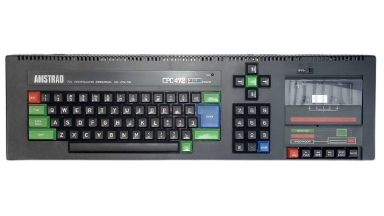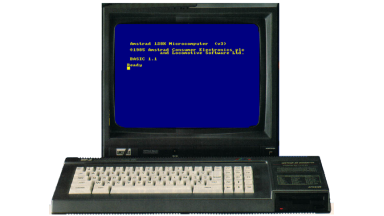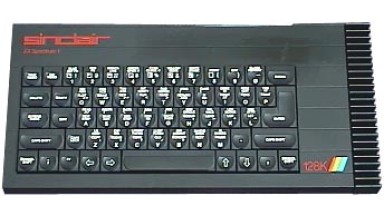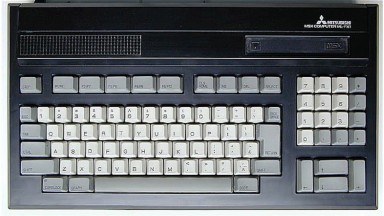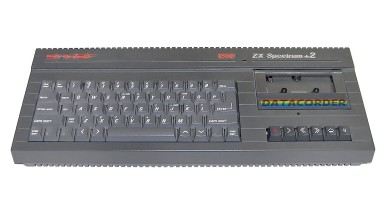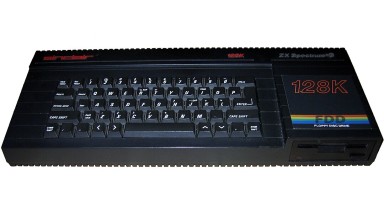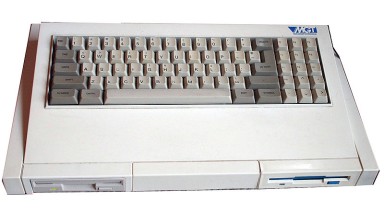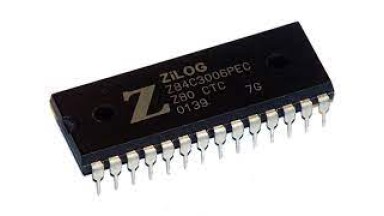
Zilog Z80 contemporary microprocessors
Launched: 1975
Bits: 8
It was one-sixth cheaper than its competitors, Intel and Motorola, at the time, and faster.
Along with the Z80, they gave rise to the first personal computers.
Launched: 1975
Bits: 4
The AM2901 is a 4-bit slice microprocessor using bipolar Schottky technology. It is designed for building high-speed microprogrammable controllers, with a number of bits that is a multiple of four.
Personal computers equipping the microprocessor Zilog Z80
Manufacturer: Sinclair
Launches: 1980
Manufactured in GB
CPU:
NEC D780C (Z80 clon)
@ 3.25MHz
Memory: 1 KB ~ 16 KB
Support:
Hard drive:
None
Operating system: BASIC
It was the first computer available in the UK for one hundred pounds.
Manufacturer: Sinclair
Launches: 1981
Manufactured in GB
CPU:
Zilog Z80
@ 3.25MHz
Memory: 1 KB ~ 64 KB
Support:
Hard drive:
None
Operating system: BASIC
The successor and improved version of the ZX80 was the lowest-priced computer of its time and was sold in kit form for 49.95 pounds sterling, and for 69.95 assembled.
Manufacturer: Osborne
Launches: 1981
Manufactured in US
CPU:
Z80
@ 4MHz
Memory: 64 KB
Support: Diskette 5¼"
Support B: Diskette 5¼"
Hard drive:
None
Operating system: CP/M 2.2
The Osborne 1 was the first commercially successful portable microcomputer.
It weighed 11 kg, cost US$1,795, and ran the then-popular CP/M 2.2 operating system.
Manufacturer: Sinclair
Launches: 1982
Manufactured in GB
CPU:
Zilog Z80A
@ 3.5MHz
Memory: 16 KB ~ 48 KB
Support:
Hard drive:
None
Operating system: BASIC
The original model is known as the ZX Spectrum 16.
In a later version, 32KiB more memory was added to this device, giving rise to the ZX Spectrum 48 model.
Manufacturer: CTC
Launches: 1982
Manufactured in US
CPU:
Zilog Z80A
Memory: 64 KB ~ 128 KB
Support: Diskette 5¼" DD
Hard drive:
10 MB
Operating system: CP/M
Manufacturer: Kaypro
Launches: 1982
Manufactured in US
CPU:
Z80
@ 2.5MHz
Memory: 64 KB
Support: Diskette 5¼"
Support B: Diskette 5¼"
Hard drive:
None
Operating system: CP/M
Despite being the first model to be commercially released, it was called the "Kaypro II" (at a time when one of the most popular microcomputers was the Apple II).
The Kaypro II was designed to be portable like the Osborne, housed in an aluminum case containing all the components and with a handle for carrying.
Manufacturer: Philips
Launches: 1983
Manufactured in NL
CPU:
Zilog Z80A
@ 3.56MHz
Memory: 640 KB
Support:
Hard drive:
Operating system: MSX-DOS
Philips produced a few of its own computers in the late 1970s and early 1980s, but later adopted the MSX standard. This VG8020 was manufactured for Philips by Kyocera (in Japan).
Manufacturer: Tandy
Launches: 1983
Manufactured in US
CPU:
Zilog Z80
@ 4MHz
Memory: 64 KB ~ 128 KB
Support: Diskette 5¼"
Support B: Diskette 5¼"
Hard drive:
None
Operating system: TRSDOS
The Model 4P is a portable version introduced in September 1983 and discontinued in early 1985. It is functionally identical to the dual-drive desktop model but lacks the card-edge connector for two external floppy drives and the cassette tape interface. It has a slot for an internal modem card and could emulate a Model III.
Manufacturer: Kaypro
Launches: 1983
CPU:
Zilog Z80
Memory: None
Support: Diskette 5¼"
Hard drive:
10 MB
Operating system: CP/M
The Kaypro 10 was one of the first computers to come with a hard drive as a standard component. It came with a 10-megabyte internal hard drive and a single DS/DD floppy disk drive.
Manufacturer: Mitsubishi
Launches: 1984
Manufactured in NL
CPU:
Z80A NEC clone (D780C-1)
Memory: None
Support:
Hard drive:
Operating system:
The Mitsubishi ML-F48 is the adaptation for Europe of the ML-F120.
Manufacturer: Amstrad
Launches: 1985
Manufactured in GB
CPU:
Zilog Z80A
@ 4MHz
Memory: 64 KB
Support: Diskette 3"
Hard drive:
None
Operating system: CP/M
Innovations: Susbstituia el soporte en cintas por una unidad de disquette de 3".
This was the logical evolution of the CPC 464 model.
But it had a short life, being replaced after six months by the CPC 6128, which had twice the RAM, allowing it to run programs that couldn't be run with the CPC 464's limited memory.
Manufacturer: Enterprise
Launches: 1985
Manufactured in HK
CPU:
Zilog Z80
@ 4MHz
Memory: 640 KB
Support:
Hard drive:
Operating system: BASIC
Innovations: Era capaz de trabajar con 256 colores, y tenía una resolución máxima de 672x256 píxeles (672x512 en modo entrelazado):
los modos más usados fueron 672x512 píxeles en dos colores y 256x160 píxeles con 16 colores. Y el modo 180x80 píxeles permitía usar los 256 colores.
Tenía tres canales de sonido más uno de ruido blanco.
At the height of the 8-bit home computer boom, Locumals, a Hong Kong company, decided to enter the newly emerging market, creating a computer that sought to overtake its competitors. It ended up being a resounding failure.
Despite having superior technical specifications, brands like Amstrad and Spectrum were already established in the market, which, combined with continuous delays in its release (two years after its introduction in 1983), spelled doom.
Only in Hungary, where the remnants of the production ended up after the closure, did it have any impact.
In Germany, it is known as the Mephisto PHC.
Manufacturer: Amstrad
Launches: 1985
CPU:
Zilog Z80
@ 4MHz
Memory: 256 KB ~ 512 KB
Support: Diskette 3"
Hard drive:
None
Operating system: CP/M 3.1
Model of the first generation of the Amstrad PCW series of office-oriented computers, which came to replace the typewriter and the expensive proprietary word processors on the market, along with the 8512. Both were launched in 1985, and have no more differences than the RAM memory chips fixed in sockets and a second disk drive as standard in the 8512.
Manufacturer: Amstrad
Launches: 1985
CPU:
Zilog Z80
@ 4MHz
Memory: 512 KB
Support: Diskette 3"
Support B: Diskette 3"
Hard drive:
None
Operating system: CP/M 3.1
This Amstrad PCW model was the superior version of the PCW 8256, both launched in 1985, and has no differences other than the RAM memory chips fixed in sockets and a second disk drive as standard on the 8512.
Manufacturer: Tandy
Launches: 1985
Manufactured in US
CPU:
Zilog Z80
@ 4MHz
Memory: 64 KB ~ 128 KB
Support:
Hard drive:
None
Operating system: TRSDOS
The Model 4D with the Deskmate Productivity Suite included was introduced in early 1985. It has a revised CPU board using faster gate array logic and includes the floppy disk controller and RS-232C circuitry, all on a single board.
It has two internal double-sided floppy disk drives and is the last model descended from the 1977 Model I.
It retailed for $1,199 upon its introduction in 1985.
During 1987-1988, retail stores removed the Model 4D from display, but it was available by special order until 1991.
Manufacturer: Amstrad
Launches: 1985
Manufactured in GB
CPU:
Zilog Z80A
@ 4MHz
Memory: 72 KB
Support: Cassette
Hard drive:
None
Operating system: BASIC 1.1 ver. sin Ñ
An Amstrad distributed by Indescomp (the brand's distributor in Spain, which would later become the subsidiary Amstrad Spain) exclusively for the Spanish market. It was identical to the CPC 464, but had a printed circuit board in the ROM socket that included an 8KB RAM chip, increasing the original CPC 464's memory from 64KB to 74KB, theoretically to accommodate the new commands and routines of the new BASIC 1.1 it incorporated.
But this was only a ruse to avoid the 15,000-peseta tariff that all microcomputers imported into Spain with 64KB or less of RAM had to pay starting in August 1985.
Subsequently, all computer keyboards sold in Spain were required to be adapted to Spanish, so the Ñ key had to be added to the computer, and the translated ROM version of BASIC 1.0 was used.
A few months later, Spain joined the European Economic Community, so the import tax had to be eliminated.
Amstrad then incorporated the Ñ key into the original CPC 464 model and stopped selling the CPC 472 model.
Manufacturer: Amstrad
Launches: 1985
CPU:
Z80A
@ 4MHz
Memory: 128 KB ~ 574 KB
Support: Diskette 3"
Hard drive:
None
Operating system: CP/M 3.0
Innovations: Substituye el tipico sopote en cinta de los ordenadores de la época por una unidad de disquette de 3" de simple cara, formato que no montaria ningun otro fabricante relevante.
El software en disquette solia tener una version para correr en CP/M 2 en una cara y para CP/M 3 en la otra.
The model was initially launched in the United States (June 13, 1985) imported and distributed by Indescomp, Inc. of Chicago, and was the first Amstrad sold in North America, a hostile region for European computers.
Two months later (August 15, 1985), it entered the European market, replacing the CPC 664.
In Spain, it was distributed by Indescomp (later renamed Amstrad España, after its acquisition by the British manufacturer Amstrad Consumer PLC), with a keyboard that included the letter Ñ.
Aside from the British market, this same model was distributed by Awa (in Australia) and Schneider (in Germany).
Amstrad's split with Schneider led Schneider España to distribute the Schneider CPC 6126 in the Spanish market, with the keyboard and manuals in Spanish.
Manufacturer: Sinclair
Launches: 1985
Manufactured in ES
CPU:
Zilog Z80
@ 3.54MHz
Memory: 128 KB
Support:
Hard drive:
None
Operating system: BASIC
The implementation of the decree on tariffs on microcomputer imports, which imposed a tax of 5,800 pesetas on devices imported from the EEC, led Investronica (exclusive importer of the ZX Spectrum) to decide to manufacture them in Spain.
Manufacturer: Mitsubishi
Launches: 1986
CPU:
Z80A de NEC (D780C-1)
Memory: 64 KB
Support:
Hard drive:
None
Operating system: BASIC
This computer arrived in Spain thanks to Mabel.
Manufacturer: Sinclair
Launches: 1986
CPU:
Zilog Z80
@ 3.54MHz
Memory: 128 KB
Support: Cassette
Hard drive:
None
Operating system: BASIC
After the company was sold to Amstrad, the company began producing this model, based on the ROM of the Sinclair ZX Spectrum 128 model, and similar in appearance to it, but incorporating a cassette drive.
The +2A and +2B variants, produced in Taiwan and China, respectively, did not include the disk drive controller circuit.
Manufacturer: Sinclair
Launches: 1988
Manufactured in GB
CPU:
Zilog Z80
@ 3.54MHz
Memory: 128 KB
Support: Diskette 3"
Hard drive:
None
Operating system: BASIC
It incorporated a 3" disk drive and a disk operating system, +3DOS, in ROM.
Manufacturer: MGT
Launches: 1989
Manufactured in UK
CPU:
Z80B
@ 6MHz
Memory: 256 KB
Support:
Hard drive:
Operating system: Basic
This computer was an advanced clone of the Sinclair ZX Spectrum, manufactured by Miles Gordon Technology.
It was marketed under the names SAM Coupé and SAM Élite.
In Spain, it was distributed by LSB.
Manufacturer: Amstrad
Launches: 1990
Manufactured in GB
CPU:
Zilog Z80
@ 4MHz
Memory: 128 KB
Support: Diskette 3"
Hard drive:
None
Operating system: AMSDOS
Innovations: Mejoraba al Amstrad 6128 en el apartado gráfico, aumentando la paleta a 4096 colores, de los cuales podía mostrar 31 simultáneos en pantalla, y añadiendo el soporte para manejar sprites.
En el apartado de audio incorporaba DMA.
The upgrade to the Amstrad 6128 model, which was only on the market for three months.
Compared to its competitors in the 1990 market (the Atari ST and the Commodore Amiga), its 8-bit processor was already outdated.
